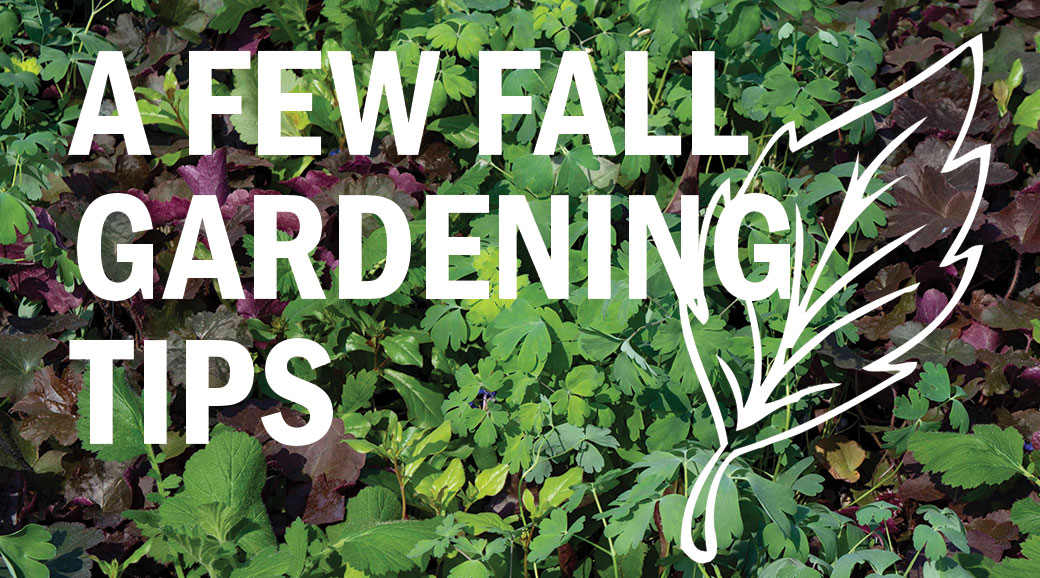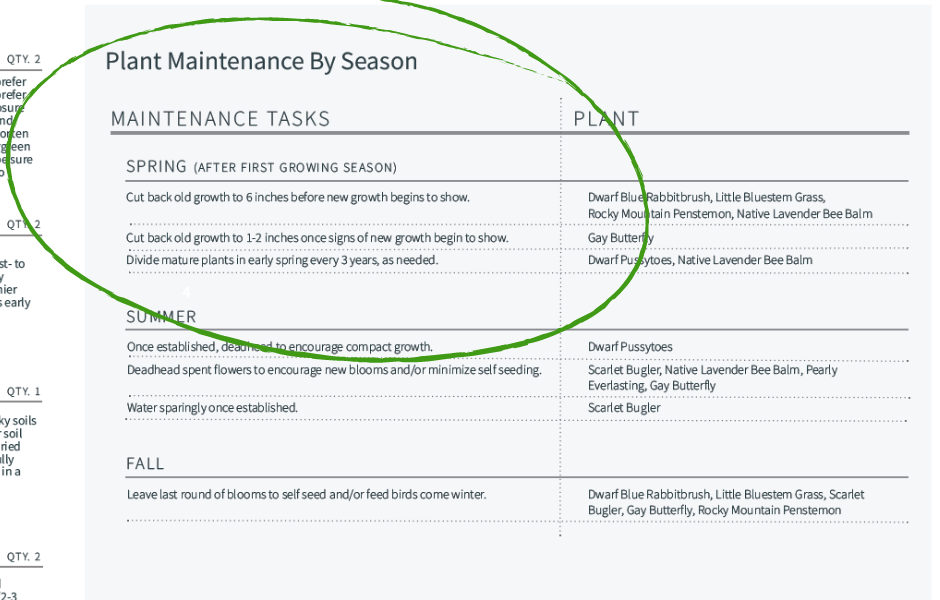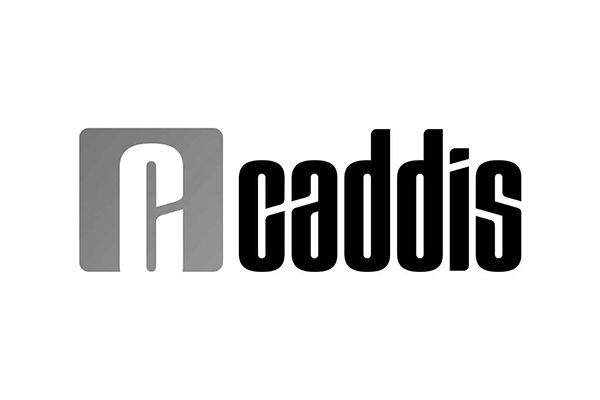We love talking about all things gardening and water conservation through landscape change! Submit your question(s) for the xeric plant enthusiasts – aka the Garden In a Box team – to GardenInfo@ResourceCentral.org, and sign up for our monthly Garden In A Box newsletter for more helpful tips and answers! (Visit our Garden In A Box homepage to sign up)
Fall Maintenance – Less is More!
While there are certainly some beneficial tasks to complete in the fall in your Colorado garden, we definitely believe less is more. This article from Harlequin’s Gardens in Boulder is a great reminder of just that: Relax! Reconsidering Garden Cleanup.
Although we don’t recommend general fall cleanup of perennials, there are a few tasks that’ll help set you up for success come spring.
• Continue to get rid of weeds and remove dead annuals.
Remove all diseased plants and dispose of them in the trash (not the compost bin!)
• Plant bulbs or perennials you may want to bloom in spring. Check out this recent New York Times article about fall planting.
• Water all trees and shrubs deeply at least once before the first snowfall.
For your Garden In A Box gardens, you can refer to the Plant Maintenance By Season section of your Garden Info Sheet for suggestions on which plants may appreciate a bit more attention in the fall. Cutting back, dividing, and additional mulching are the primary fall activities but many plants do not need these every year.
• Minimal cutting back or deadheading. With many perennials, you may want to leave the last blooms of autumn to go to seed to self-seed, provide texture and interest for the winter season, and encourage visits from the hungry birds they bring in. Many beneficial insects and small animals rely on plant material for habitat throughout the winter.
• Divide mature plants. Dividing keeps fast-growing perennials under control and can help reinvigorate those more mature plants that need a boost later in life. Learn more about dividing perennials here. While some people traditionally consider this a fall activity, we at Resource Central tend to enjoy and suggest spring division instead of fall, as our Garden Info Sheets indicate!
• Mulch moist soil on a warm day after the first hard freeze. Be careful not to smother smaller plants and leave 2-3″ mulch free around shrubs and trees. When the ground alternatively freezes and thaws in winter, applying a fresh layer of mulch after the first freeze keeps the soil temperatures more constant. This reduces the likelihood of plants being heaved out of the ground exposing the roots to the harsh winter air. You can use dried leaves*, straw, or pine boughs which can be removed in early spring when new growth begins to emerge.
*A note on mulching with dried leaves. The leaves of some trees could be harmful to your soil and plants because of the chemical components in the leaves, including oak, black walnut, and beech. We recommend learning what types of trees you have in your yard, and looking into the usefulness of their leaves as mulches before using them!










